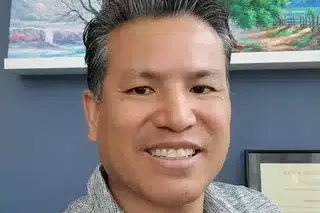Understanding people’s preferences and needs is essential for delivering person-centered services. By knowing what people like, expect and need, providers can offer personalized and quality services. In this article, we will explore some of the best practices to learn about people’s preferences and needs.
Asking open-ended questions is one of the best ways to learn about people’s preferences and needs. Providers can ask specific questions about their clients’ independence, individual rights, community access, and integration. For example,
“What types of opportunities do you have to spend time in the community with other community members?” and “What types of interactions are common for you to have with members of your community?”
Asking questions about what people like about their work, housing, and services and what they would like to change if they could is also essential.
Listening carefully to the person’s answers and following up on their responses is equally essential. Providers can seek more details and examples to understand how their services have supported or hindered their clients’ opportunities to be integrated members of the community. It is also important to observe the person’s body language and other signs that might suggest their true feelings are different from their words. Providers can use visual aids or technology solutions such as photos or communication devices to learn the preferences of people who are unable to verbalize their responses.
Providers can also use tools such as Planning Alternative Tomorrows with Hope (PATH) to identify a person’s dreams and work backward to lay out steps to reach that goal. Through annual or semi-annual meetings, people and the staff supporting them can discuss what they would like to accomplish in the next year and beyond. After each meeting, a staff member can share the person’s dreams and passions with the people who work closely with them.
Another best practice to learn about people’s preferences and needs is to assess their interests and preferences formally. Providers can complete an interest and activities assessment as people move in. This assessment asks questions about their history and preferences in community activities, traveling, special events, active games, and group activities. Providers can also record individual preferences, interests, and needs on a person’s One Page Profile. This one-page summary is shared with key team members who work with the person, and it serves as a reference point in one-to-one conversations and individualized planning between support staff and the person.

Providers can also listen for informal requests and stated interests to better understand their clients. If a person expresses interest in an activity, providers can explore that activity and work to accommodate their needs. Providers can also ask friends and family members about the activities and community engagements a person likes and dislikes taking part in, with their consent.
Hosting group discussions about interests and preferences is another best practice that providers can implement. At least monthly, people can gather in groups to express any community and activity interests for the following month. Staff can bring community calendars to this meeting to help people get ideas about the activities going on in the community.
Finally, providers can get feedback on past activities by holding weekly meetings with people and staff. During these meetings, they can discuss last week’s activities, what they enjoyed, what they didn’t, and what opportunities are available in the community.
In conclusion, providers must implement best practices to learn about people’s preferences and needs to provide personalized and person-centered services. By asking open-ended questions, listening carefully, assessing interests and preferences formally, listening for informal requests and stated interests, hosting group discussions, and getting feedback on past activities, providers can gain insights into their clients’ lifestyle, interests, and community involvement.
Refer someone today and help them take a step towards a better future.
Click the 'Refer Now' button to connect someone in need with our leadership team.
Share
Subscribe To Our Newsletter
Safeway HHC Contributors
Our dedicated team of home health care professionals works closely with clients and their families to develop a personalized care plan that reflects their values and priorities. We strive to empower our clients to take an active role in their care and to make informed decisions about their health and well-being.
Related News
April 11, 2024
Trauma and Keo, a Licensed Professional Clinical Counselor
Cultural stigma, misunderstanding, language barriers, financial constraints,…
April 2, 2024
Dr. Abe: A Mental Health Leader for a Community in Need
Whether new arrivals, permanent residents, or naturalized citizens, African…
March 25, 2024
Emeldah: The Strength It Takes to Seek Mental Health Help
Emeldah Mwansa is a 68-year-old mother of three adult children and four…


